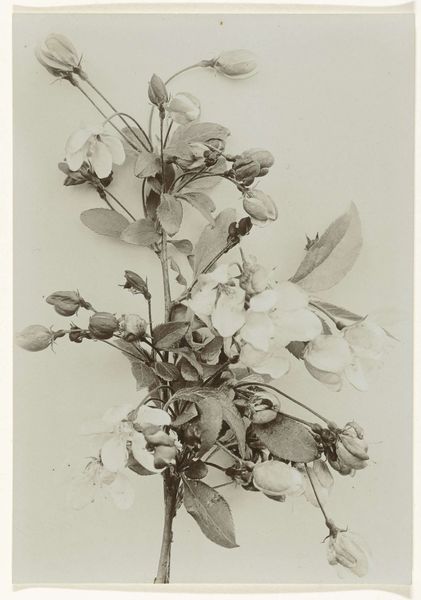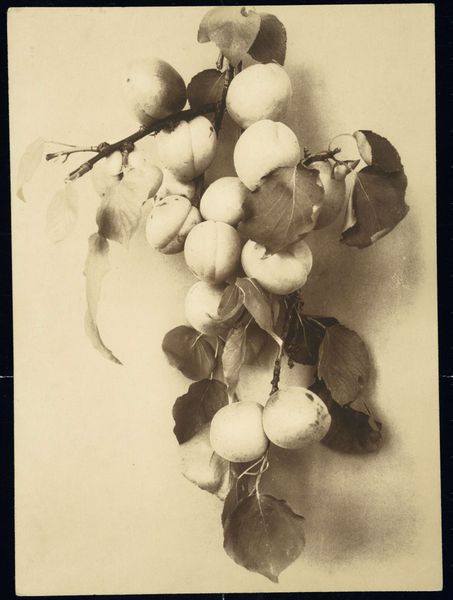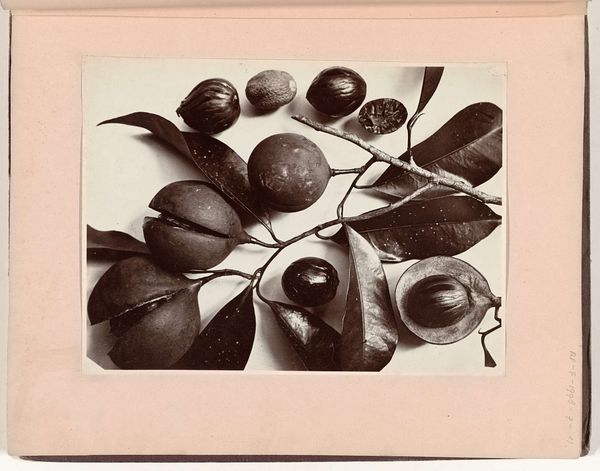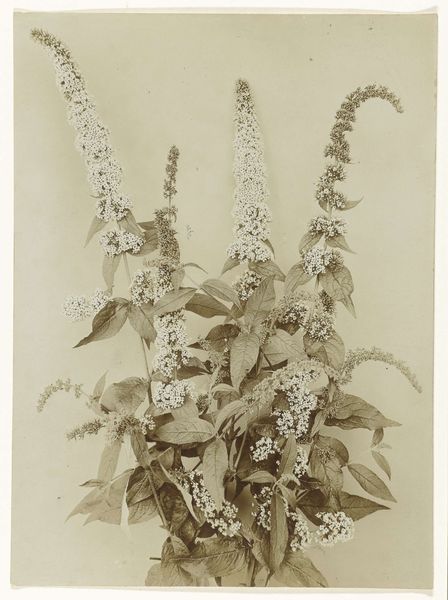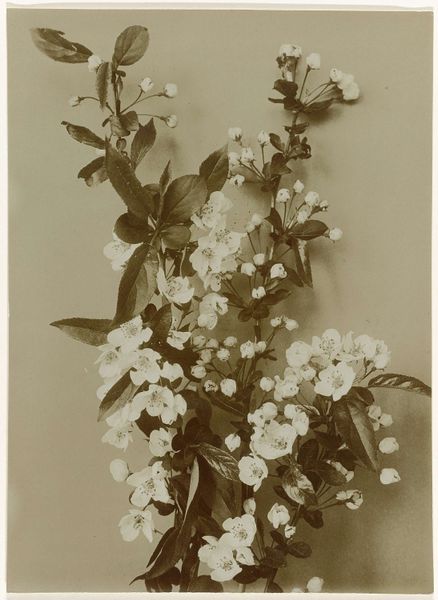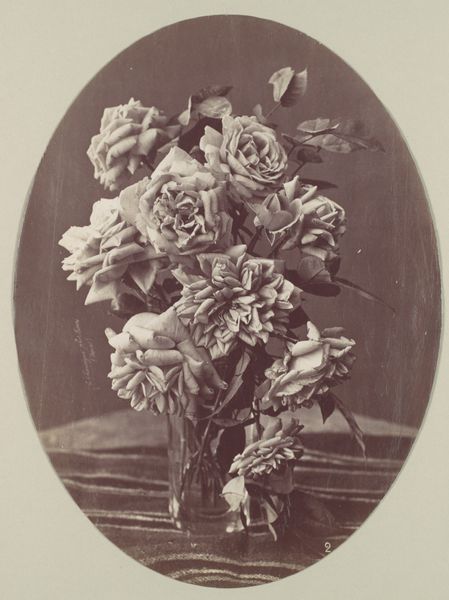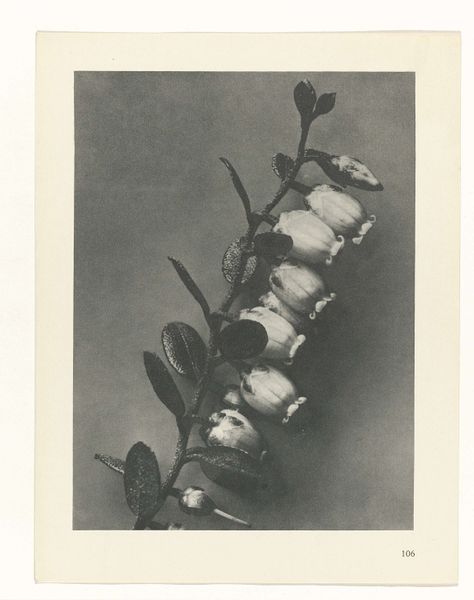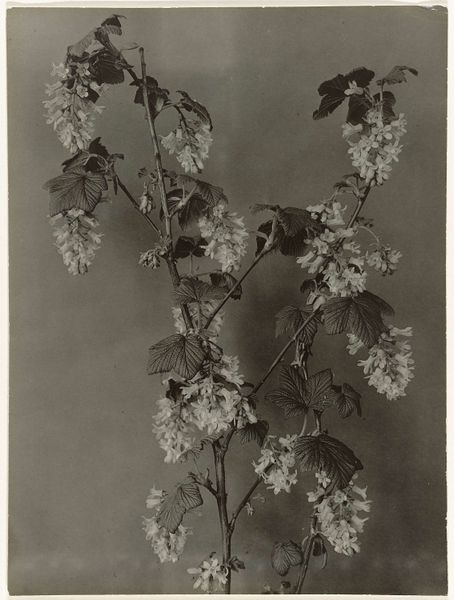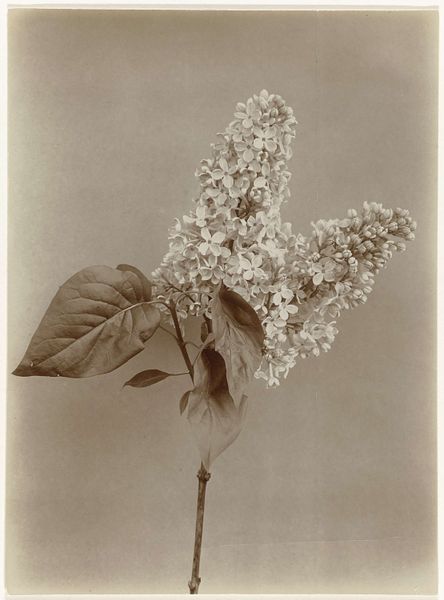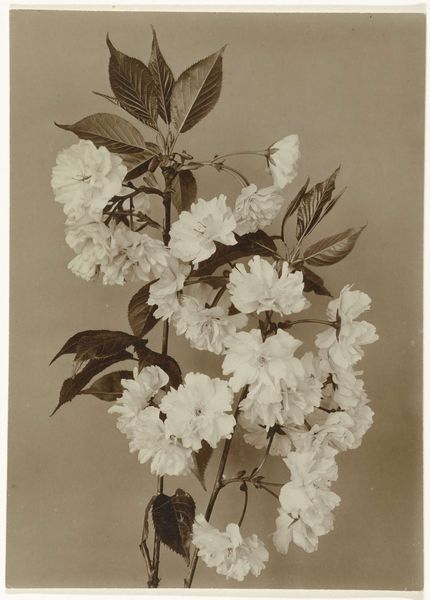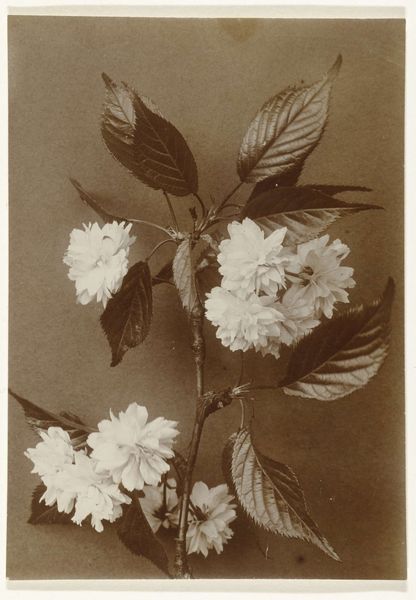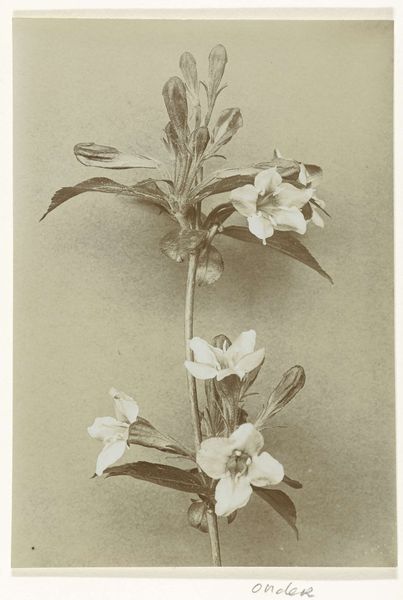
gelatin-silver-print, photography, gelatin-silver-print
#
gelatin-silver-print
#
photography
#
gelatin-silver-print
#
realism
Dimensions: 6 5/16 x 4 1/2 in. (16.03 x 11.43 cm) (image, sheet)
Copyright: Public Domain
Curator: This gelatin-silver print, titled "Sleedaarn Schlehe Fruchtzweig," likely dates from the late 19th to early 20th century. It's currently held at the Minneapolis Institute of Art and is credited to Richard Tepe. Editor: My first impression is one of quiet observation. The stark contrast between the plant and the grey background definitely brings forth a mood of somber isolation, don't you think? Curator: Indeed, the monochromatic palette amplifies its formal qualities, especially the texture of the fruit and the veins in the leaves. But let's consider the socio-political dimension, the power dynamics embedded in botanical documentation and its relationship to colonial science during that period. How does the artist engage, or perhaps subvert, those prevailing structures of power? Editor: That's a fascinating layer to consider. Though the focus appears to be straightforward documentation, it's true these depictions often served purposes linked to economic exploitation and imperial agendas. Perhaps the very act of focusing on this common sloe, the "Schlehe," rather than some exotic specimen from a far-off land is a quiet comment in itself? Curator: Precisely. The deliberate artistry also raises interesting questions. We can ponder the physical labor and social status associated with creating photographs as artistic objects at this time. Tepe’s decision to focus so intently on what could be considered an everyday scene challenges established notions about class and status within artistic representations, especially for someone working during this era. Editor: This technique, with such a stark approach, certainly evokes themes linked to existentialism. In light of contemporary debates about art as social commentary, this picture also reveals a connection with our planet, forcing the observer to become consciously aware of a human interconnectedness with plant life. Curator: It makes me consider themes relating to temporality—mortality, decay, the transience of natural beauty captured within a lasting art form. Ultimately, I believe it allows for a deeper meditation on the life cycle of both plant and representation, don’t you think? Editor: Yes, looking through the lens of our contemporary lens regarding artistic integrity and material choices opens discussions regarding labor exploitation and environmental impacts; each gelatin-silver print carries within it a trace of specific social conditions, offering new avenues of exploration and hopefully provoking thoughtful change for everyone.
Comments
No comments
Be the first to comment and join the conversation on the ultimate creative platform.
